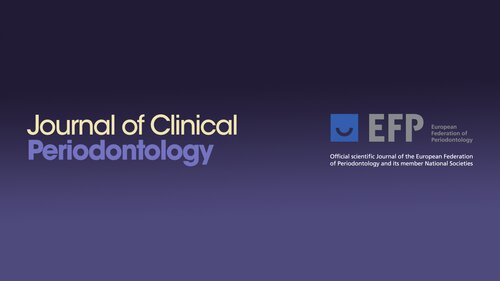![]()
24 July 2025
New EFP guidance addresses aesthetics in periodontal care
Categories:Clinical Practice, Publications

The European Federation of Periodontology (EFP) has published a landmark consensus report, Aesthetics and Patient-Reported Outcomes in Periodontology and Implant Dentistry, in the Journal of Clinical Periodontology. This new guidance places a spotlight on aesthetics and the experiences of patients, factors that are increasingly shaping clinical decisions but have often been overlooked in both research and practice.
The report is the result of a focused EFP workshop that examined three key clinical situations where aesthetic impact is high: gingival recession defects, immediate or early/delayed implant placement, and the treatment of peri-implant buccal soft-tissue dehiscences.The workshop, that took place in Florence in January 2025 in collaboration with the Italian Society of Periodontology and Implantology (SIdP) and the Spanish Society of Periodontology (Sepa), was informed by five systematic reviews assessing clinician-reported outcomes (CROs), patient-reported outcomes (PROs), and patient-reported experiences (PREs).
“This consensus is a turning point,” said Professor Spyros Vassilopoulos, president of the EFP. “It reflects the federation’s commitment to care that is not only scientifically sound but also aligned with what matters most to patients: their satisfaction, their perception of success, and their quality of life.”
Among the report’s key findings: in the treatment of GRDs, techniques such as coronally advanced flaps (CAFs) with connective tissue grafts (CTGs) led to predictable root coverage, and clinician-reported aesthetic scores correlated with clinical improvements. However, patient perceptions of aesthetics did not always align with these clinical outcomes, indicating that standard metrics may not fully capture the patient experience.
In implant therapy, the addition of CTG at the time of implant placement helped to stabilise the mucosal margin, yet neither clinician- nor patient-reported scores fully reflected these benefits. Conversely, in treating peri-implant dehiscences, the use of CTG beneath a CAF yielded favourable results from both professional and patient perspectives.
The report also highlights the growing importance of validated tools, such as patient-reported outcome measures (PROMs), in reliably assessing the impact of therapy on patients’ health and well-being. The EFP previously addressed these issues during its 10th European Workshop in 2014, but the latest publication marks a significant step forward by offering specific guidance based on the latest evidence.
“The inclusion of patient-reported outcomes and aesthetic scores is no longer optional, it is essential,” said Professor David Herrera, corresponding author, who chaired the workshop. “This report is a call to action for researchers and clinicians to design studies and deliver treatments that truly reflect what patients value. It’s about listening to them, measuring their experience properly, and integrating it into clinical decision-making.”
The authors call for further clinical trials that integrate CROs, PROs, and PREs, and that report both the benefits and potential harms of treatments. This broader and more patient-centred approach can help ensure that clinical success goes hand in hand with patient satisfaction.
This latest consensus also sets the stage for the federation’s upcoming workshop in 2026: Management of mucogingival deformities and conditions around teeth and peri-implant soft and hard tissue deficiencies.
The full open-access publication is available in the Journal of Clinical Periodontology.




